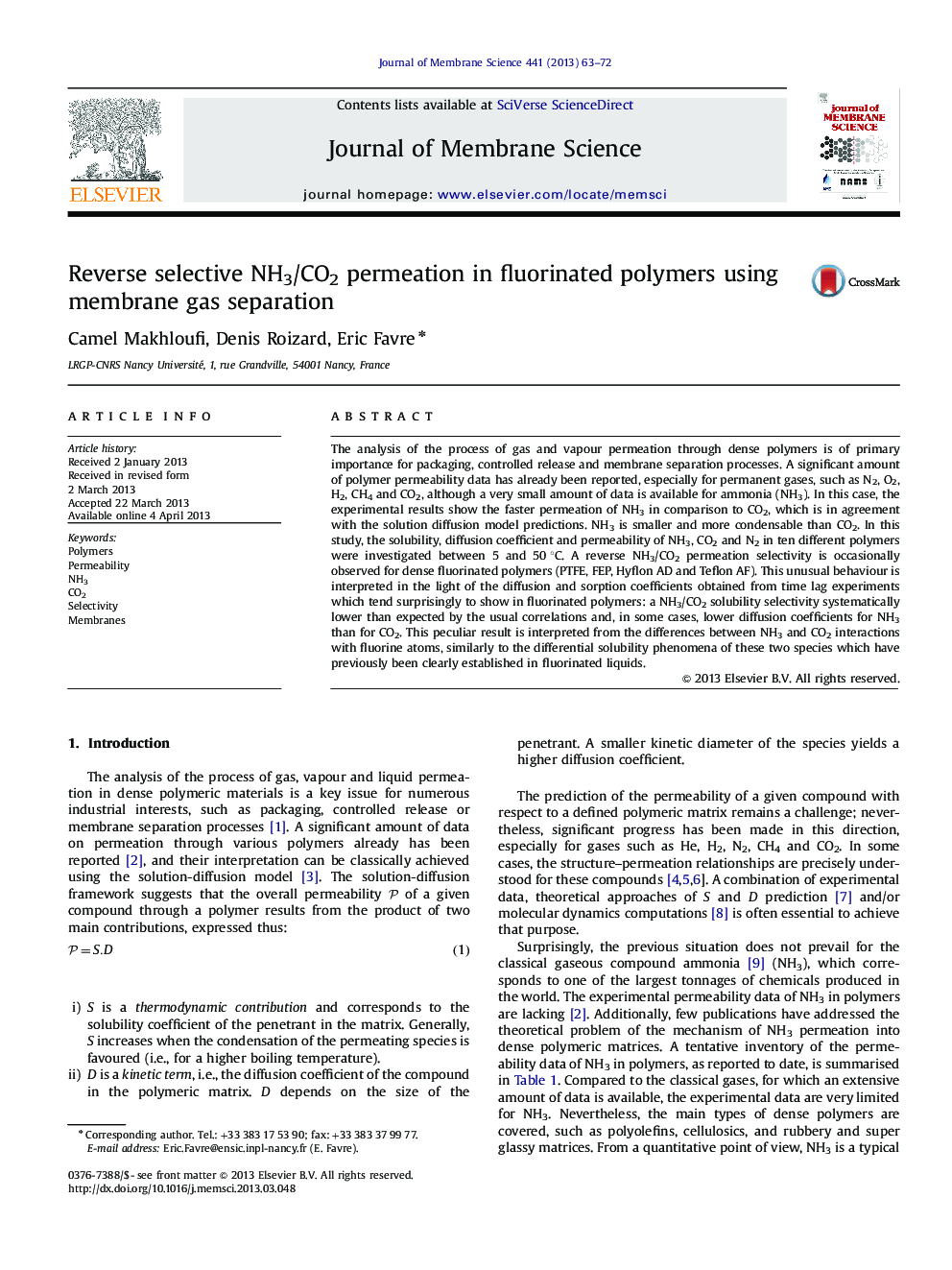| کد مقاله | کد نشریه | سال انتشار | مقاله انگلیسی | نسخه تمام متن |
|---|---|---|---|---|
| 633988 | 1456058 | 2013 | 10 صفحه PDF | دانلود رایگان |

• Ammonia permeability into a series of polymers is reported.
• Solubility and diffusivity of ammonia into different polymers is reported.
• Reverse NH3/CO2 selectivity occurs only in fluorinated polymers.
• Interpretation of reverse selectivity behaviour based on solution diffusion mechanism.
• Key role of differential NH3 CO2 interactions into fluorinated polymers.
The analysis of the process of gas and vapour permeation through dense polymers is of primary importance for packaging, controlled release and membrane separation processes. A significant amount of polymer permeability data has already been reported, especially for permanent gases, such as N2, O2, H2, CH4 and CO2, although a very small amount of data is available for ammonia (NH3). In this case, the experimental results show the faster permeation of NH3 in comparison to CO2, which is in agreement with the solution diffusion model predictions. NH3 is smaller and more condensable than CO2. In this study, the solubility, diffusion coefficient and permeability of NH3, CO2 and N2 in ten different polymers were investigated between 5 and 50 °C. A reverse NH3/CO2 permeation selectivity is occasionally observed for dense fluorinated polymers (PTFE, FEP, Hyflon AD and Teflon AF). This unusual behaviour is interpreted in the light of the diffusion and sorption coefficients obtained from time lag experiments which tend surprisingly to show in fluorinated polymers: a NH3/CO2 solubility selectivity systematically lower than expected by the usual correlations and, in some cases, lower diffusion coefficients for NH3 than for CO2. This peculiar result is interpreted from the differences between NH3 and CO2 interactions with fluorine atoms, similarly to the differential solubility phenomena of these two species which have previously been clearly established in fluorinated liquids.
Journal: Journal of Membrane Science - Volume 441, 15 August 2013, Pages 63–72